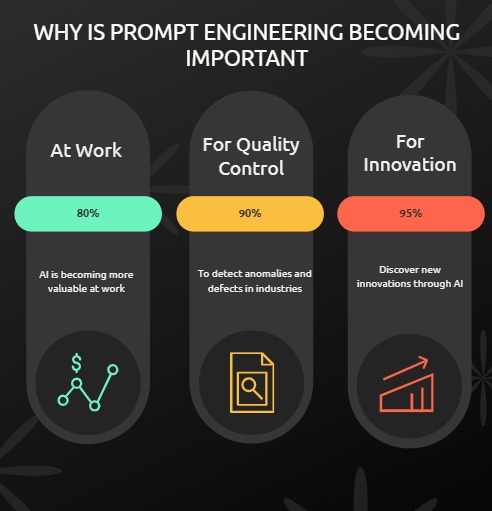A Tale of Two Requests
Mildred, a small business owner, needed help writing a promotional email for her coffee shop’s new seasonal menu. She sat down at her computer and typed into an AI tool: “Write me an email about my new menu.”
The AI gave her a generic, boring email that could have been for any restaurant anywhere. Frustrated, she almost gave up.
Table of Contents
Then her tech-savvy friend Mike showed her a different approach. He helped her type: “Write a warm, friendly email to loyal customers of ‘Mildred’s Corner Café’ announcing our new fall menu. Mention our signature pumpkin spice latte, maple pecan scones, and cozy atmosphere. Keep it under 150 words and include a 15% discount code for the first week. Write in a personal tone like I’m talking to regular customers who know me.”
This time, the AI created a perfect email that sounded exactly like Sarah and made her customers excited to visit. The difference? Mike knew how to talk to AI effectively.
What is Prompt Engineering?
Think of prompt engineering like giving clear directions to a brilliant assistant. When you interact with AI tools like ChatGPT or Gemini, the way you ask your question makes a huge difference in the answer you get back.

Prompt engineering is simply the skill of writing good instructions for AI. Just like you’d be more specific when asking a friend for help (“Can you pick up milk from the store?” instead of “Can you help me?”), you need to be clear and specific when talking to AI.
It’s called “engineering” because there’s a method to it. Good prompt writers know tricks and techniques that make AI give better, more useful answers.
Why Does This Matter?
1. You Get Way Better Results
The difference between a lazy prompt and a good one is huge. A bad prompt might give you generic, unhelpful answers. A good prompt gives you exactly what you need.
For example:
- Bad prompt: “Help me with marketing”
- Good prompt: “Write 5 social media post ideas for a small bakery’s Instagram account, focusing on weekend specials and using a friendly, local tone”.
2. You Save Time and Money
When you use AI tools that charge by usage, better prompts mean fewer tries to get what you want. Instead of going back and forth five times, you get it right the first time.
3. You Get Consistent Results
If you’re using AI for work, you want similar quality every time. Good prompts help you get reliable results, whether you’re writing emails, creating content, or solving problems.
4. Anyone Can Use Powerful AI
You don’t need to be a programmer or tech expert. With good prompting skills, teachers, writers, small business owners, and anyone else can use advanced AI tools effectively.
5. You Can Handle Complex Tasks
Modern AI can do amazing things – write code, analyse data, create stories, and help with research. But to get these complex results, you need to know how to ask for them properly.
Learning prompt engineering is like learning how to communicate better with the most knowledgeable assistant you’ll ever have. As AI becomes part of everyday work and life, knowing how to “talk” to it effectively becomes as important as any other communication skill.
Just like Mildred discovered with her coffee shop email, the right prompting approach can transform frustrating AI interactions into powerful, practical solutions. The people who master this skill now will have a big advantage as AI continues to change how we work, create, and solve problems. This is just the beginning of your prompt engineering journey. In upcoming articles, we’ll dive deeper into the techniques that separate good prompts from great ones.
About the Author

Happiness Oluebube is a seasoned tech expert with a degree in Computer Engineering and certifications in Data Analysis, Front-End Web Development, Cybersecurity, and Networking. With a deep passion for education and mentorship, she currently serves as a Front-End Web Developer and Data Analysis Instructor at a Computer Education Center in Lagos State, where she is dedicated to equipping the next generation of tech professionals with industry-relevant skills.
She is the Founder and CEO of SafireTechHub , an innovative online platform focused on digital business and learning. Through SafireTechHub, she leverages data-driven insights to accelerate business growth and deliver transformative digital experiences.
See also:
The Imperative of Cybersecurity Awareness
The Imperative of Cybersecurity Awareness
Beware Of Ponzi Schemes & 7 Ways to Avoid Ponzi Schemes
Understanding Phishing, How to Protect Yourself & 10 Ways to Avoid Being a Victim





